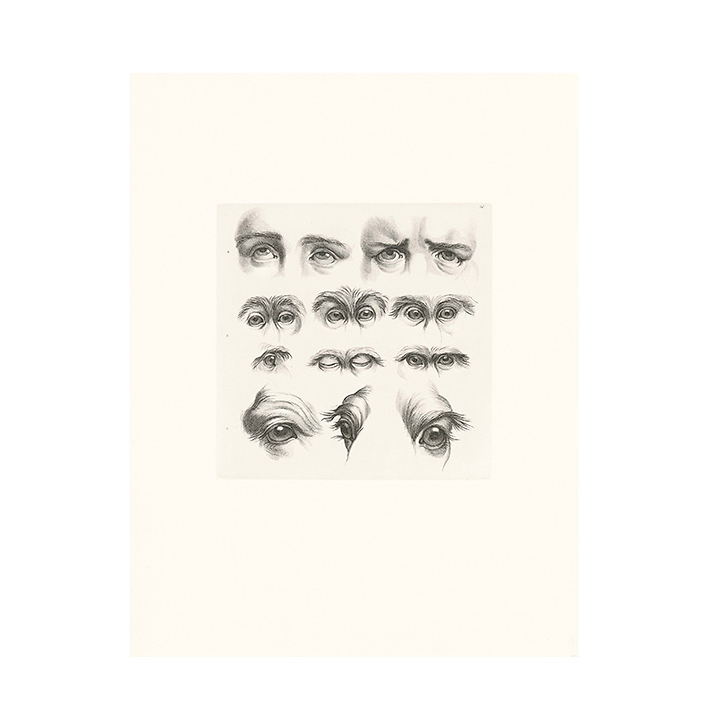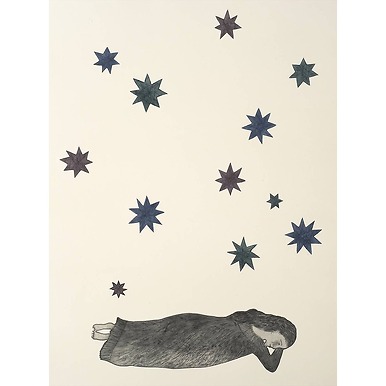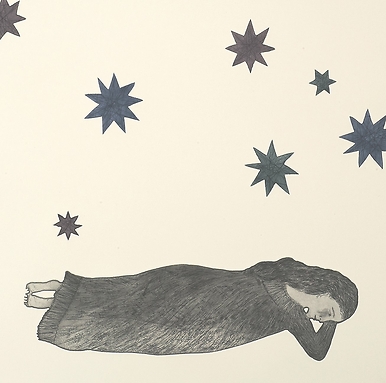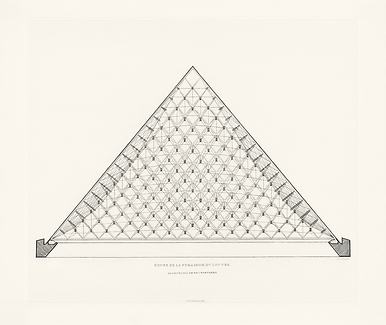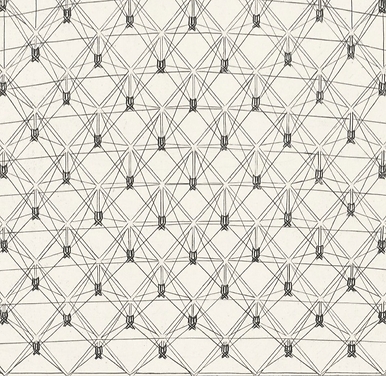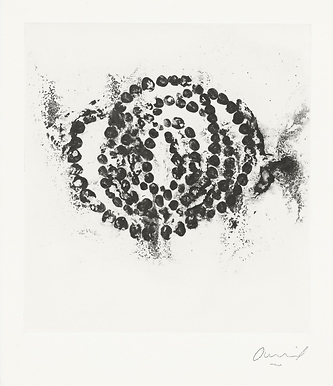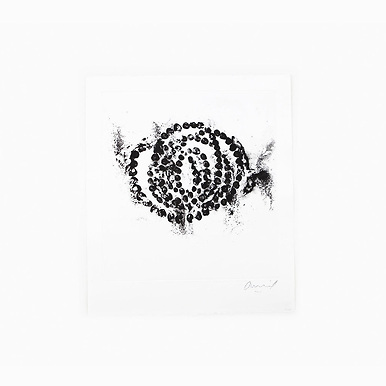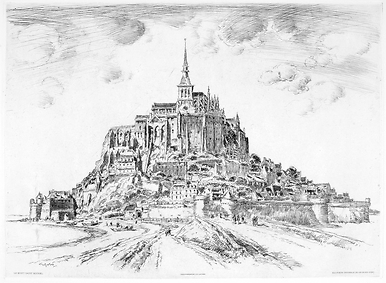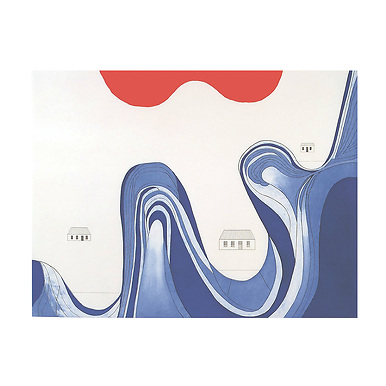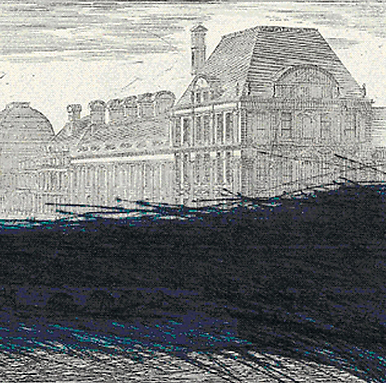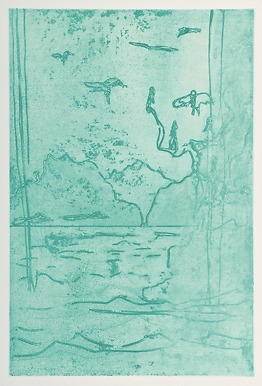Engraving Human eyes, monkey eyes and camel eyes
KMU01143
Le Brun, Louis XIV's first painter, delivered several speeches to the Académie on the expressiveness of human faces. To reinforce the effectiveness of his arguments, he included drawings to illustrate his points. In his lecture on the relationship between human physiognomy and that of animals (the text...
Read more
Le Brun, Louis XIV's first painter, delivered several speeches to the Académie on the expressiveness of human faces. To reinforce the effectiveness of his arguments, he included drawings to illustrate his points. In his lecture on the relationship between human physiognomy and that of animals (the text of which has not survived), he examines the link between character or emotion and facial features. He employs four different approaches. First, he studies the features of famous men from Antiquity, whose personalities and representations are fixed in the collective imagination (Nero is cruel, Seneca is wise...). He then examines possible comparisons between human traits and animal figures (each animal can also be associated with a character trait - the fox with cunning, for example). He then turns to the study of eyes and eyebrows - again, their shape is seen as essential to understanding human expression and soul. He concludes with a study of the human brain. These speeches, and the drawings made to accompany them, offer a general reflection on man's expressiveness, how to render it in the arts, and the links between physical appearance and soul.
These drawings enjoyed renewed success in the early 19th century, when prints were made of them and published with a dissertation analyzing Le Brun's approach.
Dimensions of the sheet (cm): H. 50 × W. 65
Dimensions of the plate (cm): H. 30.8 × W. 31
Close
Sold by GrandPalaisRmn

